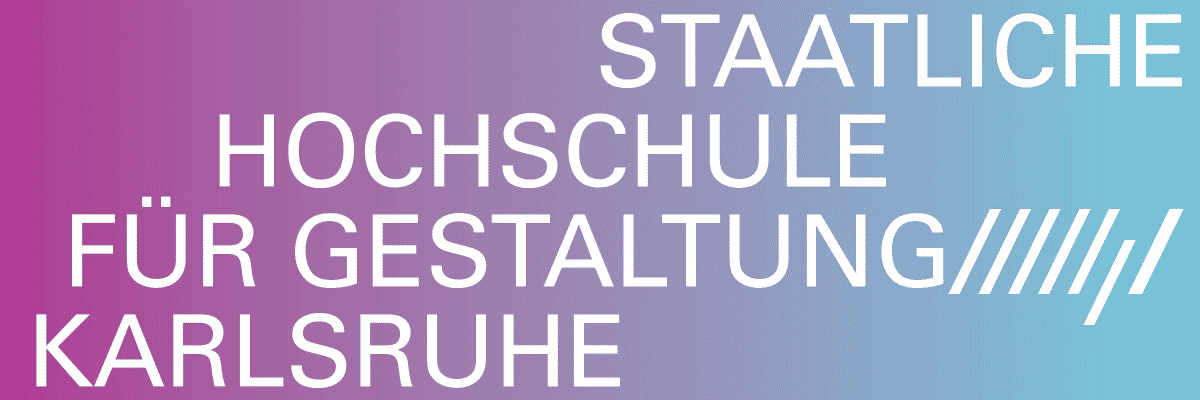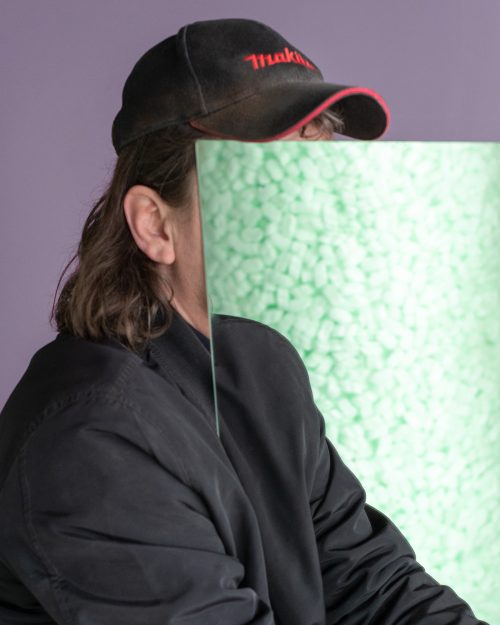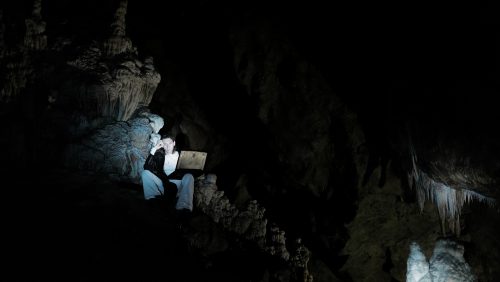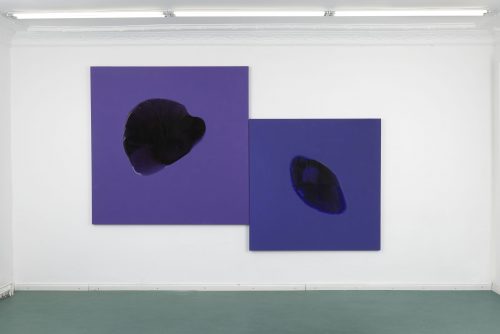
Groupshow
It's Supposed to be Simple, but I'm Not
Project Info
- 💙 Zeller van Almsick
- 💚 Camille Regli
- 🖤 Groupshow
- 💜 Camille Regli
- 💛 Simon Veres
Share on

Jiajia Zhang and Dorota Gawęda & Eglė Kulbokaitė
Advertisement

Giulia Essyad, Cornstar, 2024, HD Video, 7’03''

Dorota Gawęda & Eglė Kulbokaitė, Minda Andrén and Pipilotti Rist

Minda Andrén and Pipilotti Rist

Minda Andrén, To pass lightly over, 2025. Oil, Chinese ink, pigmented gesso on canvas, 60 x 45 cm

Minda Andrén, Dorota Gawęda & Eglė Kulbokaitė and Josèfa Ntjam

Minda Andrén,Long inhale, long exhale, 2025. Oil, Chinese ink, pigmented gesso on canvas, 120 x 90 cm

Dorota Gawęda & Eglė Kulbokaitė, Enclosure (Lower Bound of the Landscape) I - VIII, 2023. Aluminium, wood, print on chiffon 8 panels of 200 x 110 x 3.5 cm

Dorota Gawęda & Eglė Kulbokaitė, Enclosure (Lower Bound of the Landscape) I - VIII, 2023. Aluminium, wood, print on chiffon 8 panels of 200 x 110 x 3.5 cm

Dorota Gawęda & Eglė Kulbokaitė and Jiajia Zhang

Dorota Gawęda & Eglė Kulbokaitė, Enclosure (Lower Bound of the Landscape) I - VIII, 2023. Aluminium, wood, print on chiffon 8 panels of 200 x 110 x 3.5 cm

Josèfa Ntjam Mélas de Saturne, 2020. HD Film, 11''50

Laura Schawelka, Jiajia Zhang and Dorota Gawęda & Eglė Kulbokaitė and Josèfa Ntjam

Jiajia Zhang and Laura Schawelka

Laura Schawelka, TwitchCon (Meet & Greet), 2025. Archival Inkjet Print, 59,4 x 42 cm

Laura Schawelka

Jiajia Zhang, Who is she? (a mime, a communist, a student protester), 2024. Child education mirror, wooden alphabet beads, fabric bow, sticker, 29.9 cm x 45.7cm x 23.8 cm

Dorota Gawęda & Eglė Kulbokaitė, Yield II, 2021. Mirror polished cast aluminium. 70 x 51 x 40 cm
I’m lying in bed, phone in hand. It’s 11:20 pm and I
should be falling asleep soon. Almost automatically, I
refresh my emails—maybe a notification? At this hour,
I wouldn’t even want to read it. I drift into other apps,
where a torrent of posts feels both utterly trivial and
unbearably significant—nauseating, dehumanising.
Revolted—but still lying flat—I think about reacting,
putting my “good conscience” on display. And yet, I
wonder if this impulse is really just a passive action—or
a confused, voluntary non-action. Is there no other way
to engage than through posts and 10-second videos?
Am I thinking too much? It’s complicated. Anyway,
it’s late, 11:57 pm. I set my alarm, switch on my small
DOB radio, and fall asleep listening to another round of
information.
Back in the 1980s, Jean Baudrillard warned us of
the growing power of images: they no longer merely
represent reality—they produce it. Postmodernist thinking
fractured universal certainties that had once shaped
systems of thought and power structures, opening the
way to plurality and the deconstruction of knowledge.
But over time, it left behind an ideological and political
void, where little feels solid or mobilising. Today, the
word simulacrum gets pasted onto everything: deepfakes,
digital animation, synthetic worlds. The “real” don’t last
long before hitting the digital.
Inspired by artist and theorist Hito Steyerl’s recent
book Medium Hot (2025) – in which she interrogates
the speed and virality of images, probing the ethical,
political, and environmental consequences of artificial
intelligence – I wonder: while the democratisation of
the Internet in the 1990s and 2000s helped disrupting
entrenched hegemonies and amplifying the voices of
marginalised and invisibilised communities, it also
created an oversaturated reality without lasting impact.
Images proliferate, repeat, multiply. Everything feels
urgent, but nothing endures. This is not a call to restore
absolutes, but a desire to get back to some form of agency
in how technologies are used—and, by extension, how
identities, bodies, materiality, and the expanded notions
of the living perform. French philosopher Catherine
Malabou argues for the notion of plasticity over simulacra.
For her, subjectivities are shaped by rupture, malleability,
and transformation. So, how can we regain control over
the technological machinery that seems to exceed us?
Perhaps fragmentation, rather than dissolving us, might
indeed be a site of resilience and action.
It’s not simple, but neither am I.
The exhibition It’s Supposed to be Simple, But I’m Not
at Zeller van Almsick brings together artists who
examine how image technologies permeate and shape
contemporary life. Amid the ambivalence of hyper-
connectedness, the works carve out spaces of resistance,
questioning our relationship to the self, the body, and
the performativity of social roles. Working across video,
photography, sculpture and painting, the artists absorb
and disrupt visual patterns, engaging critically with form
and message.
The early video works of Pipilotti Rist bring us
back to the late 80s and early 90s, a focal moment of
technological experimentation. In the iconic I’m Not the
Girl Who Misses Much (presented during her studies in
1986), Rist manipulates the image through acceleration,
vocal distortion and blurriness, transforming her body
into a deconstructed and deobjectified subject. Repeating
and cartoonishly deforming a line from John Lennon’s
song for Yoko Ono, she parodies the “doll dance,”
satirising cultural ideas around hysteria. In Pickelporno
(1992)—with its psychedelic and cyberfeminist
aesthetic—it is not only the subject but also the filming
medium that intrigues: a mini surveillance camera (called
“lipstick camera”) wanders across the bodies, staging
a sensuous choreography that unsettles the viewer’s
voyeuristic gaze.
Thirty years later, Giulia Essyad extends this line of
inquiry in Cornstar (2024), a work that feels resonant
to Rist’s explorations of eroticism, fetishism, and image
manipulation but transposed into a contemporary
reality—one saturated by AI-generated imagery,
gender politics, and the mass circulation of amateur
pornography. The piece belongs to Essyad’s ROSE
PERIOD, which investigates the invisible, subcutaneous
registers of the body—meaning desire, pleasure,
attraction. Through censorship, blurring, and anonymity,
she engages in a semi-automated, AI-assisted editing
process where excess possibilities of tracking and
morphing clash against one another.
Minda Andrén’s new series of paintings (2025) is
inspired by somatic therapies and the intimate ties
between body, mind, and sexuality. Internalising images
from her immediate environment as well as from the
vast flow of the Internet and social media, her works
translate these stimuli into painterly compositions.
Through accumulation and absorption, she explores how
erotic representation takes form in painting today—not
through explicitness but through cracks and gaps, like
the memory trying to reassemble fragments together.
Like a scrutinising gaze pointed at us, the work Yield
II (2021) by Dorota Gawęda and Eglė Kulbokaitė
reactivates a common and popular object in Eastern
Europe: a flower-shaped cosmetic mirror, also secretly
used during puberty to discover one’s body. The artists’
practice inscribes itself in speculative and post-digital
aesthetics, merging organic and synthetic forms. Their
freestanding metal structures, Enclosures I-VII (2023-
2024), resemble screens, filters or folding paravents.
Drawing on Slavic folk mythologies, they summon the
beliefs of “field workers” into a hyper-technological
world. The resulting images, generated from digital
prompts and performance documentation, appear
ghostly, hallucinatory and mutable.
The techno-fantasy visual language of Josèfa Ntjam—
who calls herself a child of the Internet and of the
African diaspora—blends together a set of references
aimed at dissolving hegemonic narratives. Between
oceanic imaginaries, ancestral rituals, and African
mythology, the video Mélas de Saturne (2020) constructs
a diasporic and speculative experimentation, by conjuring
“Persona” – an opaque, collective, and multiple identity
that seeks emancipation from the digital depths of the
darknet.
Jiajia Zhang’s work Untitled (After Love) (2022) stitches
together a patchwork of images and narratives drawn
from personal archives alongside TikTok, YouTube,
and Instagram gleaning. Set to karaoke and pop music,
the video reveals both the persistent influence of the
West in Chinese and Asian societies and the continued
inner weight of family traditions and social roles. “Guilt,
desperation, alienated role-playing… resignation to lesser
accomplishment,” as Zhang notes in the film, are part
of the everyday realities many women face, particularly
working mothers.
Laura Schawelka, meanwhile, recently attended
TwitchCon, an annual fan convention of the massively
popular streaming platform Tchitch, where millions
watch others live through their phones and laptops.
Twitch culture is intimate, often vaguely sexual, a
mediated spectacle of observation. Schawelka’s new
work (2025) dissects this mediated intimacy, its zones of
blurred boundaries, where spectatorship itself becomes
performance.
Overall, the artists in this exhibition explore the
social, political, and emotional dimensions of digital
technologies and self-expression. Approaching the
image as malleable matter—accumulated, distorted,
transformed—they reveal its potential to unsettle. I
stumbled upon a quote from French poet Paul Valéry
who asked: “What is there more mysterious than clarity?”
In what seems lucid lies great mystery. It is in opacity,
incoherence, and fragmentation that tactics of subversion
can take shape. The artists thus open up spaces where
complexity and ambiguity may act as instruments of
disruption and spaces of refuge.
Camille Regli




